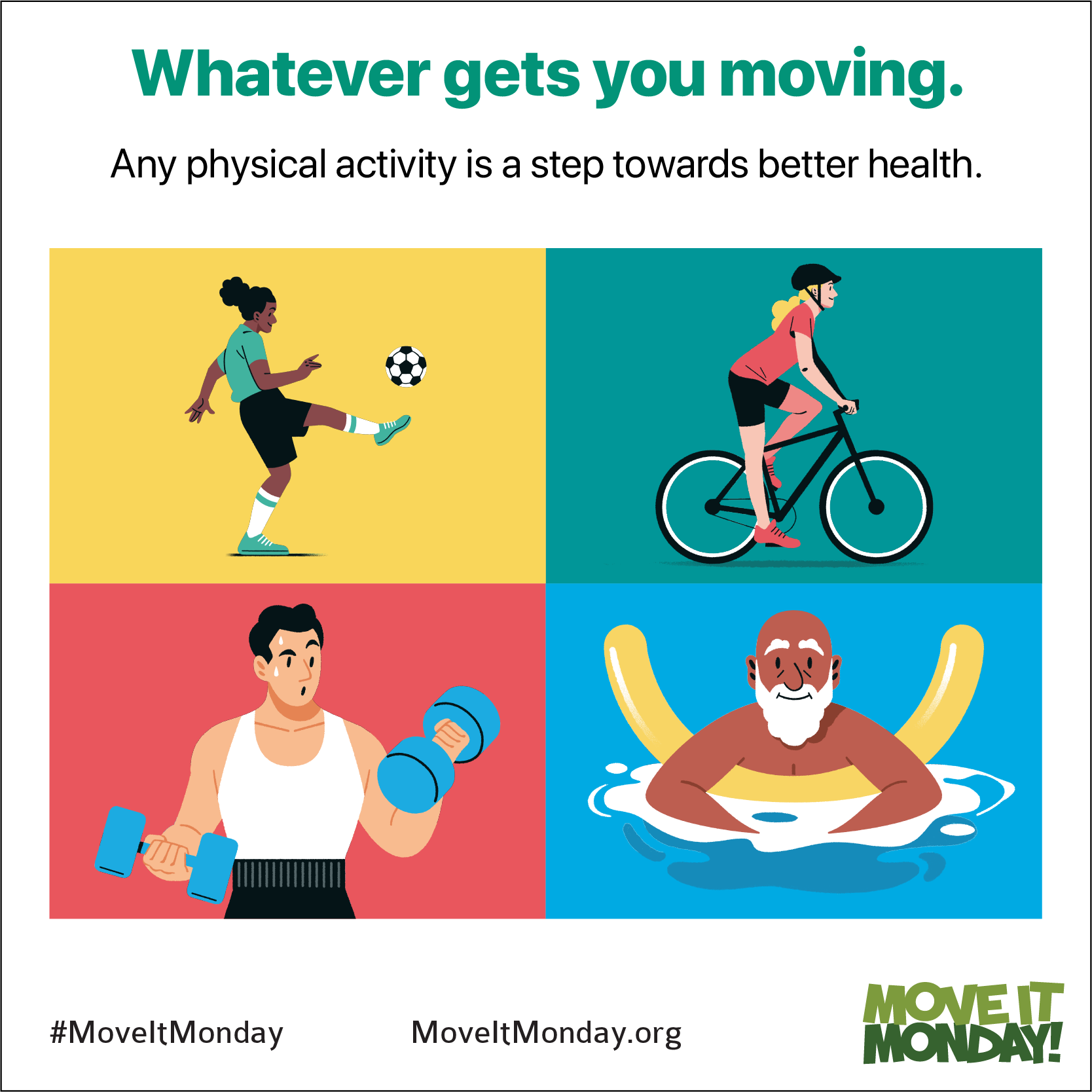How Much Should I Move?
Being physically active is one of the most important actions a person can take to improve their health. Evidence shows that physical activity is associated with a range of immediate and long-term benefits, including better sleep and mood, healthier weight, and lower risk of chronic disease.
But what is “physical activity” and how much does one need to start experiencing the benefits?
Physical Activity Vs. Exercise
You may not even realize it, but many day-to-day tasks—walking through the neighborhood, climbing the stairs, putting away groceries, carrying a toddler—all qualify as sources of physical activity. Any form of energy expenditure (aka movement) can be classified as physical activity.
Exercise is a type of physical activity that is more structured and controlled and is performed with the goal of improving health. Walking up the stairs is physical activity, going to a spin class is exercise—both are beneficial to health.
Three Categories of Physical Activity
The Physical Activity Guidelines for Americans, defines three distinct categories of physical activity: aerobic activity (also called endurance activity or cardio activity), muscle strengthening, and bone strengthening—all of which have their health benefits.
Aerobic Activities: speed walking, dancing, jogging, running, cycling, swimming, jump rope, basketball, soccer.
Muscle Strengthening Activities: climbing stairs, carrying furniture or groceries, lifting weights, doing pushups.
Bone Strengthening Activities: jumping jacks, speed walking, jogging, lifting weights, playing hopscotch.
Incorporating a combination of aerobic, muscle strengthening, and bone strengthening activities into a weekly routine ensures an individual is building endurance, strength, balance, and flexibility.
How Much Physical Activity Do I Need to Experience Health Benefits?
Everyone, from children and adolescents to adults and seniors, benefits from consistent weekly physical activity, but the type, intensity, duration, and amount of physical activity necessary varies based on age, comfort, and ability level.
Older Adults (65+): For adults 65 and older, being physically active makes it easier to perform daily tasks, including eating, bathing, toileting, dressing, getting into or out of a bed or chair, and moving around the house or neighborhood. Adults over the age of 65 should consult with their doctor of physician before engaging in even low-intensity physical activity, especially if he or she has been sedentary or inactive for an extended period of time.
Per week, older adults should aim for 150 to 300 minutes of low- to moderate-intensity physical activity that includes aerobic activity and bone and muscle strengthening exercises. Aerobic activity builds endurance and keeps weight at a healthy level, while strengthening the lower body and core can help prevent debilitating falls or injuries.
Adults (18-65): Adults should aim to for 150 to 300 minutes of moderate activity each week. In general, adults should sit less and move more, avoiding long periods of inactivity when possible. For active adults, health benefits continue to accrue for those exceeding 300 minutes per week of moderate physical activity. Additionally, adults should do muscle strengthening activities twice a week and try to engage all major muscle groups.
Children (3-17): Children have a lot of energy, and it’s recommended they get 60 minutes of moderate physical activity each day. A variety of age-appropriate activities should be offered that address aerobic endurance and bone strengthening. Running, jumping, basketball, soccer, jump rope, and hopscotch are all physical activities conducive to strengthening bones.
This Monday, consider how you can incorporate more physical activity into your weekly routine. Participating in a Monday Mile is one option, but you can also fit in movement when doing daily chores like gardening or grocery shopping. Remember, all physical activity, no matter how minor it may appear, contributes to your weekly goal.
